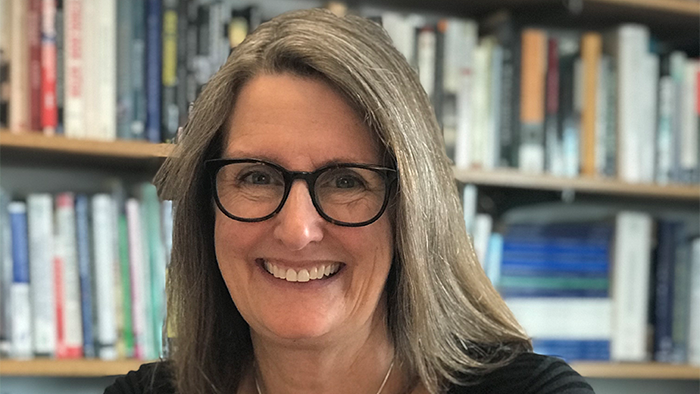MLFTC associate professor turns the page on difficult history

Teaching difficult history has never been easy. But aspiring history teachers at Arizona State University’s Mary Lou Fulton Teachers College may have an edge in navigating this challenge.
Long before the recent public debates over how and what history is taught in public schools, MLFTC Associate Professor Lauren Harris made this topic an area of scholarly study. In 2016, Harris received a fellowship from the Lincoln Center for Applied Ethics to explore strategies for teaching genocide. In 2019, she began work on a book tentatively titled, “Teaching Difficult Histories.”
As interest in the topic expanded, so did the book’s title. “Teaching Difficult Histories in Difficult Times: Stories of practice” came out in February, 2022 and serves as a timely tool for both new and experienced teachers. Harris is the primary editor of the book, published by Teachers College Press. (Since then, the book has received the 2024 Society of Professors of Education Outstanding Book Award.)
“I teach students how to teach history,” says Harris, an associate professor of history education, who has a joint appointment with ASU’s School of Historical, Philosophical and Religious Studies. “Some of them are scared but they want to teach history and are excited about it. It is a difficult time right now with the current debates, but these things can’t be avoided if we are teaching history.”
The book defines difficult histories as periods of time that were traumatic for those who experienced them but can also be troubling to teach and learn. The term has been around for years in history and social studies education scholarship.
Voices of veteran educators
“Teaching Difficult Histories in Difficult Times” features practical approaches to such sensitive topics as enslavement, the Holocaust, immigration, war, racial violence and terrorism. Harris says the content of the book is rare, but not because the problem hasn’t been explored by education specialists and policy makers. It’s rare because solutions are not commonly offered by those in the arena — actual practicing teachers.
The stories of practice are loosely divided into four sections and feature contributions from more than a dozen teachers, as well as two educators from the National September 11 Memorial & Museum.
“We wanted to hear from people who had actually done this, not those who would say ‘this is how it should be done’ and ‘these are the challenges you may have,’ ” Harris says. “We wanted teachers' voices. We wanted to focus on their challenges and successes.”
A chapter written by a veteran of the war in Iraq illustrates the impact of identity on learning. The author brings passion and a true sense of place to his teaching about war and is particularly positioned to talk about the importance of peace, Harris says. Another chapter on teaching history in Newberry, Florida, a town made infamous for the multitude of lynchings that occurred there, is used to illustrate community context.
Learning from the painful past
In the end, the book’s participants, with their successful methods and resources for teaching reprehensible history, never deliberate on the importance of teaching tough aspects of history.
Nor do they shy away from the inherent challenges of these lessons.
Harris, a former high school teacher, acknowledges the discomfort she experienced when teaching about genocide to her world history classes.
“It was always terribly difficult to teach about mass murder,” she recalls. “There are 30 students in the class and not all of them find it emotionally difficult. But for those who have experienced trauma in their own life, it could be a trigger.”
Still, Harris says, it’s important to teach about the painful past.
“The history of the United States and the world involves many stories of trauma,” Harris acknowledges. “It’s important that students learn about these stories and the different responses to them. It’s essential that they understand not only traumatic events of the past but also those happening today and how they might have roots in the past. Increasing awareness of how teachers teach these histories is key.”